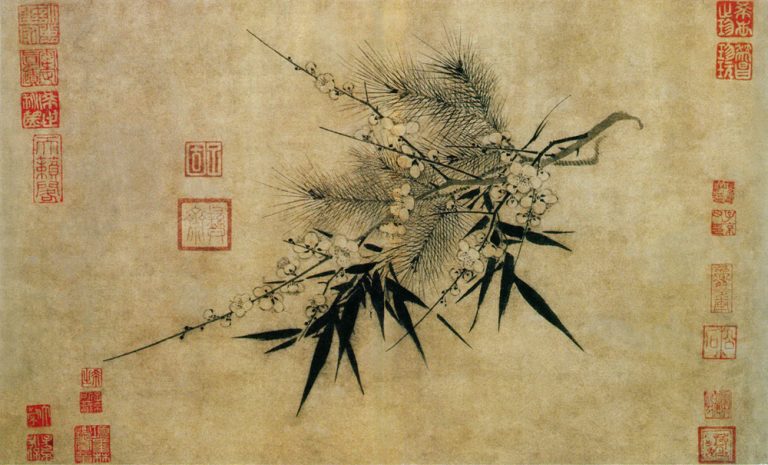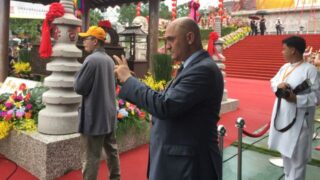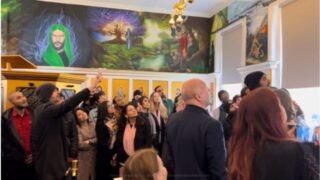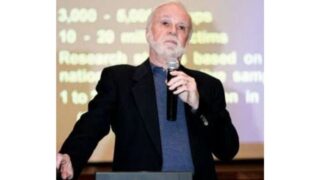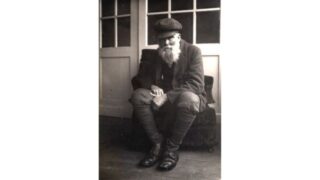Claudie Massicotte’s account confirms that many texts and artifacts of the Swiss woman who enchanted Europe with her mediumistic stories and paintings are lost. But the essential remains.
by Massimo Introvigne


Part of the admirable Oxford University Press collection “Oxford Studies in Western Esotericism,” directed by Henrik Bogdan, “Hélène Smith: Occultism and the Discovery of the Unconscious” (2023) by Spiritualism scholar Claudie Massicotte is an important book on a key fin-de-siècle medium. I confess that I read it hoping that the author had found unpublished material on the lesser-known parts of the life of Smith, whose real name was Élise Catherine Müller (not “Catherine-Élise,” according to Massicotte; 1861–1929), before and after she was studied by Geneva psychologist Théodore Flournoy (1854–1920), and on her lost paintings. I was disappointed, as Massicotte clarifies that, after a legal dispute, manuscripts and most of Smith’s paintings were acquired by “members of the Hungarian branch of her paternal filiation who had contested her will” and disappeared.
Consequently, there are few biographical details about Smith in Massicotte’s work that were not previously known. Yet, the new book succeeds in including Smith’s mediumistic activities within a larger cultural framework and demonstrating their crucial importance for the development of European psychology, linguistics, and visual arts.
Élise Catherine Müller was born in Martigny, Switzerland, in 1861, the daughter of a Hungarian merchant. Although by all accounts an intelligent girl, she repeatedly failed her school examinations and as a teenager started working as a sales assistant in a silk store, a job she kept for several decades. As a young woman, she developed an interest in Spiritualism and in 1892 discovered her abilities as a medium. At first, she channeled the spirit of Victor Hugo (1802–1885), a Spiritualist himself, but the French writer was soon replaced by the Italian adventurer and esoteric master Cagliostro (1743–1795), who introduced himself to the medium as “Léopold.”


Flournoy, a distinguished psychologist who was interested in mediumistic phenomena as were all his main fin-de-siècle colleagues, including Sigmund Freud (1856–1939) himself, joined Müller’s Spiritualist circle in 1894, and observed her phenomena for the next six years. He divided her channeling experiences into three cycles, which he called “romans” (novels). The first was a “royal cycle,” where she was Queen Marie-Antoinette of France (1755–1793), of whom Cagliostro-Léopold was the lover. It was also revealed that Smith herself was the reincarnation of Marie-Antoinette. The second was a “Hindoo cycle,” where the medium channeled Princess Simandini, the favorite wife of one Prince Sivrouka (of whom Flournoy was supposedly the reincarnation). When Sivrouka died, Simandini performed sati, i.e., burned herself alive on his funerary pyre. The third was the “Martian cycle” where, guided by Léopold-Cagliostro, Smith traveled to Mars and described its inhabitants and their language. She also produced drawings of both Mars and other landscapes and characters she saw in her trances.


In 1900, Flournoy, hiding Müller under the pseudonym “Hélène Smith,” published “Des Indes à la Planète Mars” (From India to Planet Mars), which quickly went into three French and one English editions. Unlike other psychologists of his time, Flournoy did not believe that mediumistic phenomena had a supernatural element or involved actual contacts with deceased human beings. He also dismissed anti-Spiritualist claims that mediums such as Smith were simple frauds. He concluded that Smith’s “romans” came from her unconscious. What looked like supernatural knowledge of ancient history and languages unknown to her was actually “cryptomnesia,” reminiscences of something the woman had read or heard and then forgotten. The experiences of the mediums, Flournoy argued, were not simple manifestations of “hysteria” either. They might help psychologists to chart previously unknown dimensions of the unconscious with the help of healthy and intelligent “patients” with peculiar gifts.
Not everything was easily explained, though. Massicotte reconstructs how Flournoy involved Ferdinand de Saussure (1857–1913), the father of modern linguistics who was also from Geneva, in the study of Smith’s “Hindoo” and “Martian” languages. Saussure coined the word “Sanskritoid” for the Sanskrit-like “Indian” language of Smith and concluded that both this language and the subsequent “Martian” and “Ultra-Martian” of Smith can be explained through cryptomnesia. Saussure concurred with Flournoy in affirming that no conscious fraud was at work, and declared Smith a precious subject to study how languages are born and structured.


Although differently evaluated for their artistic quality, Smith’s drawings also puzzled and inspired avant-garde artists, including the Surrealists. Massicotte reconstructs André Breton’s (1896–1966)’s deep interest in Smith, whom Victor Brauner (1903–1966) depicted as the “Mermaid of Knowledge” in the famous Marseille Surrealist Tarot deck in 1941.
Smith’s visions, thus, had a deep influence on the development of European art, linguistics, and psychology. However, Saussure, Breton (although perhaps not Brauner), and Flournoy himself shared a refusal to accept Smith’s experiences as supernatural. Not surprisingly, this did not please the Spiritualists and Smith herself, who eventually broke with Flournoy and entered into a dispute with him about the royalties on the book “From India to Planet Mars.”
By then, Smith was a well-off woman, as a wealthy American Spiritualist was giving her a stipend that enabled her to leave her job as a salesclerk and become a full-time medium and artist. She went on producing large paintings with Christian themes, most of which are unfortunately lost, until her death in 1929.


Massicotte tells us that there was more than what surfaced in books and legal documents in Smith’s complicated relationship with Flournoy. Through her “romans” and stories of reincarnations, Smith created narratives where she and the married Flournoy were actually lovers, although in a fantastic world. While he originally dismissed the identification with himself of male characters in Smith’s visions as “coincidences,” Massicotte believes that Flournoy was not insensitive to the charms of the beautiful woman.
Massicotte does not mention this detail out of an interest in fin-de-siècle gossip. She believes that unacknowledged desire is part of a broader picture of the interaction between mediums (mostly female) and the scholars (mostly male) who studied them. The relationship between the story of the Spiritualism mediums and the story of how society and the academia looked at the female body is a main theme in Massicotte’s works. It surely deserves further research.
